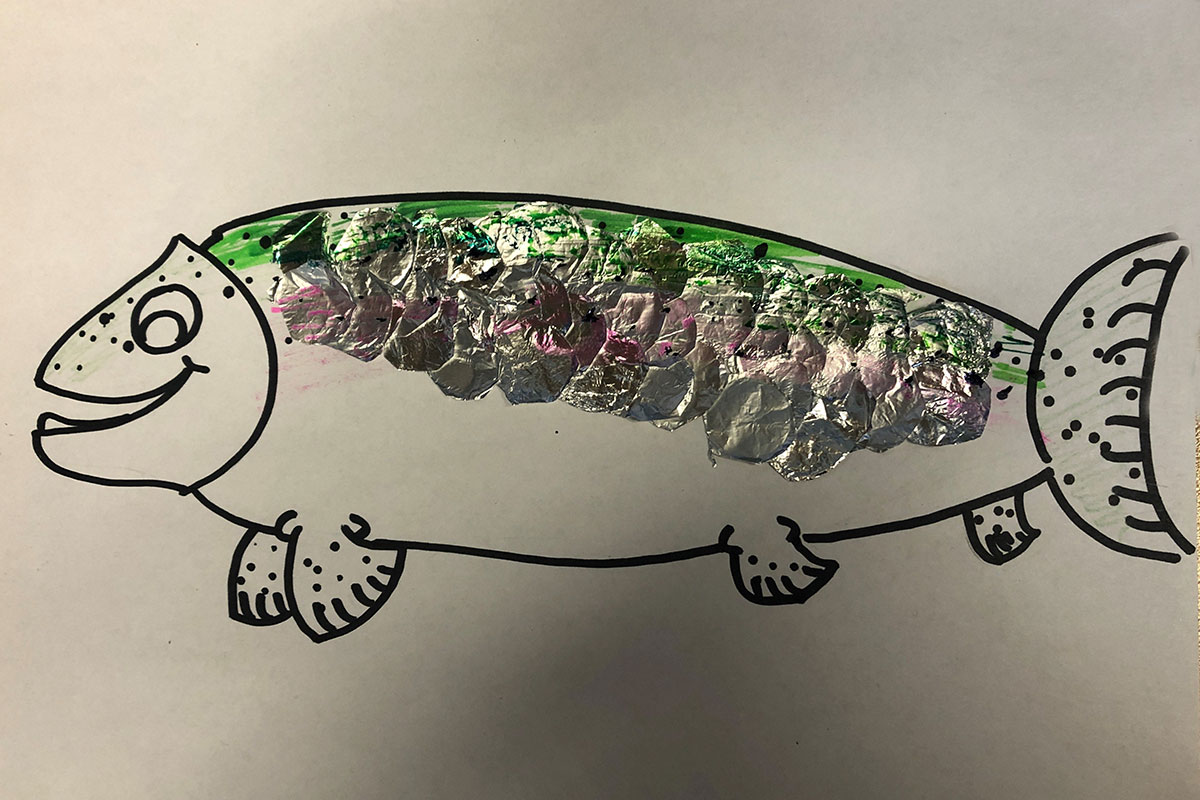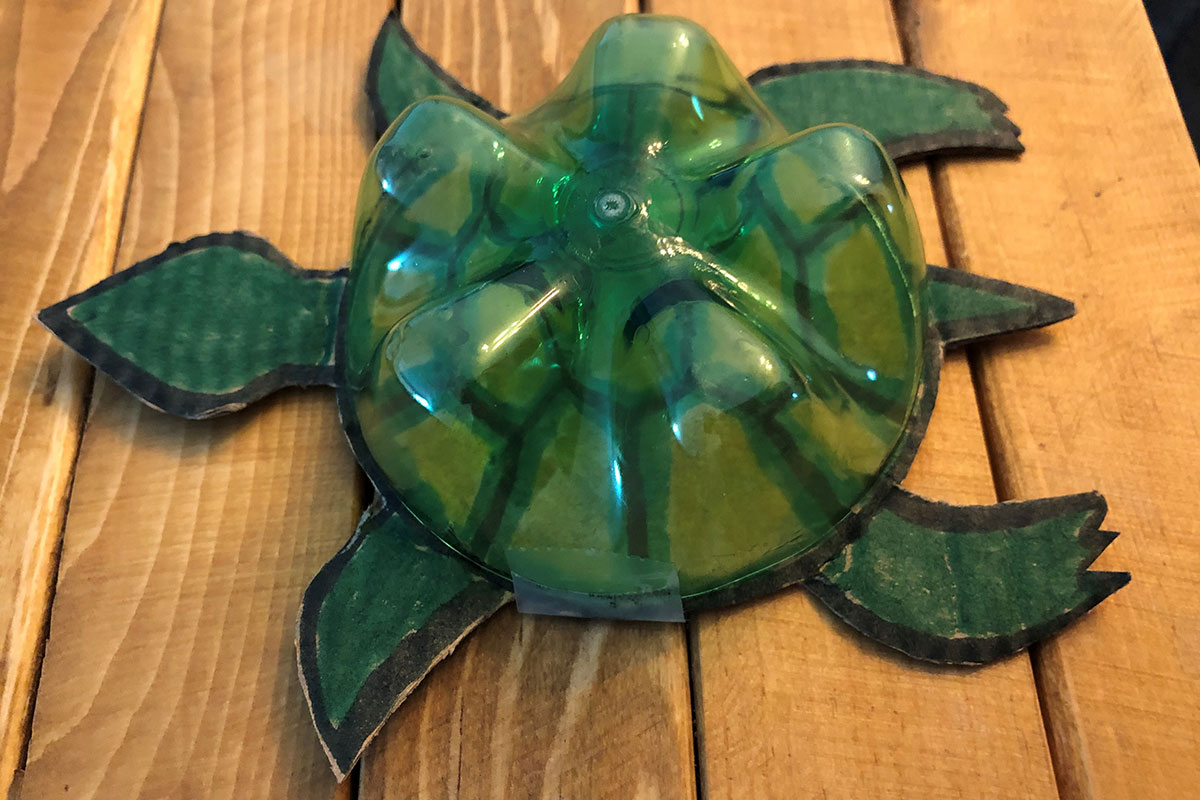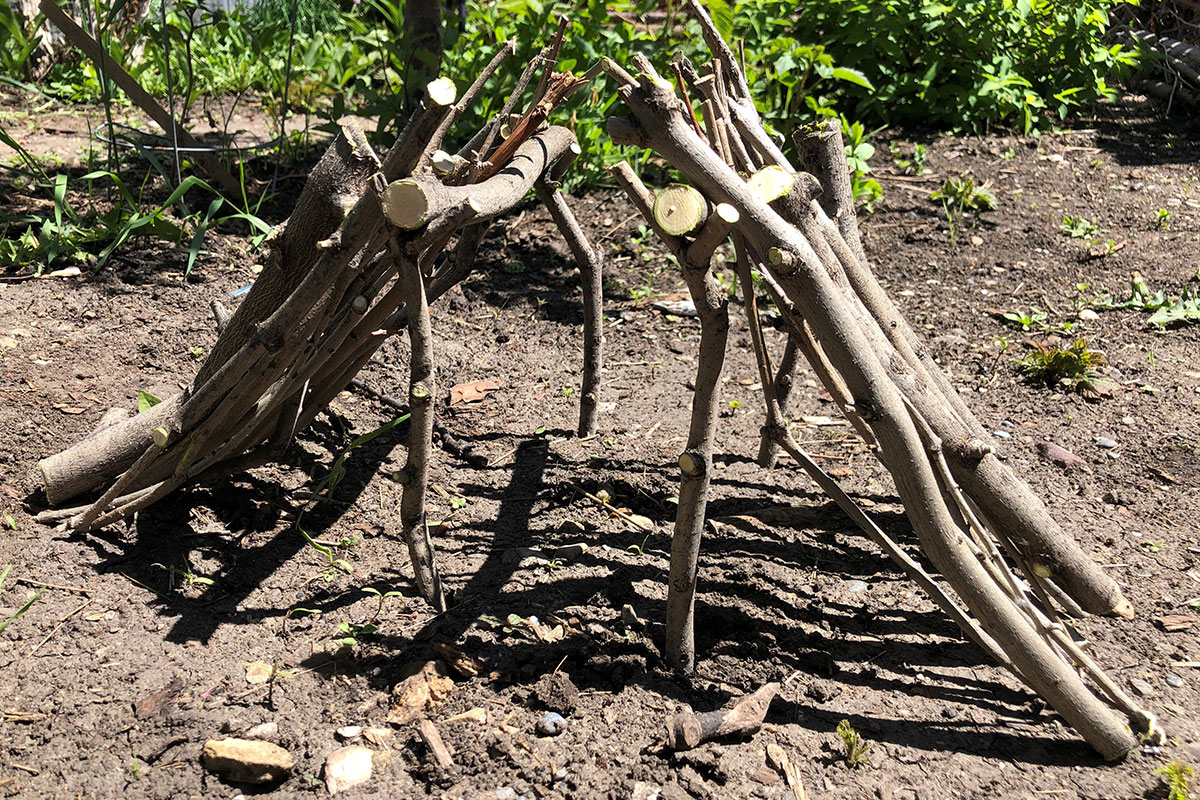Turtle Island - Day 3 - The Great Lakes and East Coast
These activities can be done alone, but work best with one or more friends on a video chat like Skype, Zoom, Facetime, etc.
Grades K-3
Mindfulness Activity
Trivia Question: In the Haudenosaunee creation story, what animal carries Skywoman on its back?
Mindfulness Activity:
- Put your palms together at chest height.
- Push your hands against each other as hard as you can.
- Which muscle gets tired first?
Shiny Fish
Supplies:
- Paper
- Permanent markers
- Aluminum foil or tinfoil
- A dime
- Hot glue gun
- Crayons
The traditional territory of the Mi’kmaq is on the east coast of Turtle Island. With access to vast waters, many types of fish are staples of the traditional Mi’kmaq diet.
Help your child draw the shape of a fish onto a piece of paper. Colour the fish.
Rip up small pieces of tinfoil using the dime to stamp out a circular shape. These will become the fish scales.
Glue the scales in layers onto the body of the fish.

Make Your Own Turtle
Supplies:
- Empty 2L pop bottle
- Thin cardboard
- Markers
- Tape or glue
- Scissors
In an Ojibwa creation story, a muskrat gave its life to retrieve a handful of earth from the bottom of the water. A turtle then offers its shell to carry the earth, which becomes Turtle Island. Read more about this story.
Help your child cut the bottom of the pop bottle.
Trace a circle onto thin cardboard using the bottom of the pop bottle. Draw a head, four legs and a tail.
Colour the cardboard green or any colours you like.
Cut out the turtle. Tape or glue the bottom of the pop bottle over the circle to make a turtle shell.

Ojibwe Ridge Pole Lodge
Supplies:
- Materials found outside
The Ojibwe are part of a larger cultural group called Anishinaabe. Their traditional territory of the Anishinaabe stretches from the eastern plains, along the Great Lakes, and north towards Hudson Bay.
In order to make shelter quickly, the Ojibwe would often make a ridge pole lodge. This type of shelter is made by leaning the “walls” on two raised parallel poles. The sides would be covered with bark or skins.
Have your child make their own miniature shelter using sticks and leaves. How can you hold up the roof? How can you weather proof your miniature shelter?
Find some small toys and play in the miniature shelter you made.

Review Questions
Ask your child:
- How does it feel to build your own shelter? (Feel)
- Why do you think animals are an important part of creation stories? (Think)
- What other ways can you make shelter outside? (Act)
Mindfulness Trivia Answer
Answer: The turtle. This is one place where the name Turtle Island comes from. The Oneida Nation is one of the five nations of the Haudeonsaunee Confederacy. You can read more about the creation story at the Oneida Nation website.
Grades 4-6
Mindfulness Activity
Trivia Question: Where is the traditional territory of the Mi’kmaq people?
- A. The west coast
- B. The east coast
Mindfulness Activity:
- Walk around the room.
- Now walk slowly.
- Now walk normally.
- Now, walk VERY slowly.
- Walk normally again.
- Now, walk very very slowly.
- How does it feel? Which energy level is your favourite?
Mi'kmaq Friendship Dance
Supplies:
- Two or more people
- Open space
The Mi’kmaq perform different dances, depending on the occasion. The most common is the friendship dance. It is a simple dance that everyone can do.
Watch the Friendship Song video. Have your child hold hands with someone in your home and move in a clockwise direction. Take three steps forward and one step back in time with the rhythm of the drum.
See more Indigenous Games for Children.
The Great Law of Peace
Supplies:
- Paper
- Poster paper
- Colouring items
The Great Law of Peace is the spoken law of the Haudenosaunee people. Learn how the Great Law of Peace was created.
Have your child think about some of the laws or rules you can create to maintain peace at your home. You can call a quick family meeting to get everyone’s input.
Ask your family: what are some of the rules we should follow to keep peace and harmony in our house?
Create a poster of your family’s rules. Make sure to hang the poster where everyone can see it in your house.
Symbols
Supplies:
- Paper
- Colouring items
The Haudenosaunee Confederacy is also known as the Iroquois Confederacy by the French and the League of Five Nations by the English. Its actual name means “people of the long house”. These Indigenous peoples lived from the Genesee River on the west, through the Finger Lakes regions, to the Hudson River on the east.
Symbolism is important in all aspects of Indigenous life but differs for each Nation and peoples. The Haudenosaunee people use the eagle to symbolize a messenger of god and protector of peace. They also use a circle to represents unity, strength and the cycles of life.
Have your child think about what symbols they think symbolize who they are. What symbols represent your family? Draw them on paper.
Learn more about:
Review Questions
Ask your child:
- How do you feel when you are in a peaceful environment? (Feel)
- Why do you think rules and laws are important to maintain peace? (Think)
- What can you do in the future to maintain peace and harmony in your classroom? (Act)
Mindfulness Trivia Answer
Answer: B. The east coast
Grades 7+
Mindfulness Activity
Trivia Question: How many smells can your nose remember? See Answer below
- A: 5 thousand
- B: 50 thousand
- C: 5 million
Mindfulness Activity:
- Sit down so you’re comfortable.
- Put one hand on your belly and the other on your chest.
- Breathe in.
- Now switch hands.
- Breathe in again.
- Which way felt better?
Friendship Dance
Supplies:
- Two or more people
- Open space
The Mi’kmaq perform different dances, depending on the occasion. The most common is the friendship dance. It’s a simple dance that everyone can do.
Watch the Friendship Dance video. Hold hands with family members and move in a clockwise direction. Take three steps forward and one step back in time with the rhythm of the drum.
The goal is to try to stay in rhythm together!
Stick Game
Supplies:
- Small rubber ring
- Small stick
- String
Indigenous youth would traditionally use a small stick, animal tissues or tendons, scraps of leather and small bones for this game. It’s a great way to work on your hand-eye coordination skills.
Tie one end of the string to one end of the stick and the other to the ring.
Toss the ring in the air and try to catch it on the end of the stick.
See how many times you can get the ring on the stick in a row. Challenge a family member to get a higher number.
Luski (Mi'kmaq Bread)
Supplies:
- 5 cups of flour
- 4 teaspoons of baking powder
- 1 teaspoon of salt
- 1/2 cup of margarine or oil
- Medium sized bread pan
- Large mixing bowl
- Rolling pin
- Spatula
- Knife
Mi’kmaq bread is called luskinikn (loo-skin-e-gen). It literally means “four cents” because it is inexpensive to make.
- Add and mix all dry ingredients in a large mixing bowl.
- Add in the water and margarine, mixing with dry ingredients to form a soft dough.
- Roll dough tightly and press firmly into a medium sized bread pan.
- Cut dough into squares with knife before baking.
- Bake in a medium oven (300 °F or 150 ºC) for about 45 minutes.
Review Questions
- How did you feel when you did the friendship dance? What did you enjoy about it? (Feel)
- Do you have any foods that are related to your culture? If so, what kinds of food have you tried? (Think)
- What are ways you can include your cultural activities into your everyday life? (Act)
Mindfulness Trivia Answer
Answer: B: 50,000

